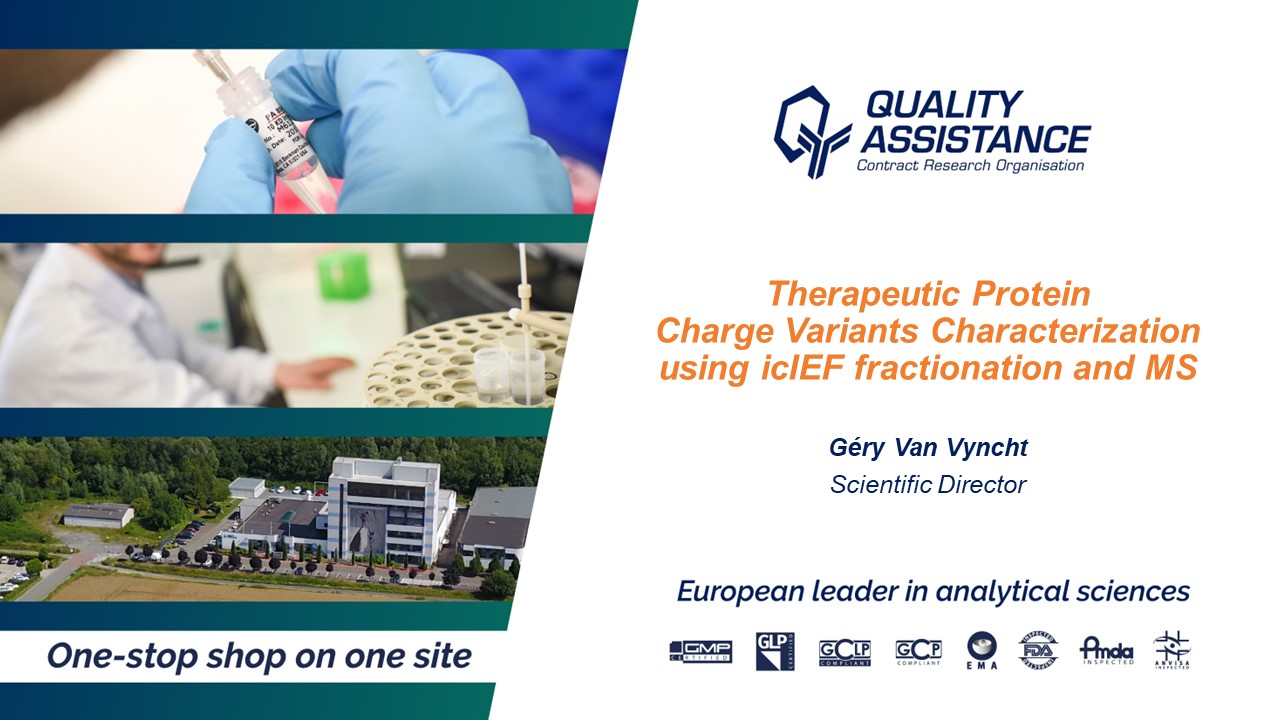Therapeutic Protein Charge Variants Characterisation using icIEF fractionation and MS

Therapeutic Protein Charge Variant Characterisation with Intact Mass and Peptide Mapping Following Microgram Preparative Capillary Isoelectric Focusing Electrophoresis Fractionation
The imaged isoelectric focusing (icIEF) has been established as the standard technique for profiling charge heterogeneity, which is a critical quality attribute (CQA) of biotherapeutics. The in-depth characterisation of individual charge variants by mass spectrometry, however, requires either collecting fractions of charge variants with traditional ion exchange chromatography (IEX), or by coupling the capillary electrophoresis directly to mass spectrometry (CE-MS).
In this study, we used the new MauriceFlex CE platform (Bio-Techne) featuring the icIEF based fractionation. The collected fractions were analysed by high resolution MS (both intact mass and peptide mapping methodologies).
Glenzocimab (Acticor Biotech), a humanised monoclonal antigen-binding fragment (Fab), was used as a practical case study to identify unknow species observed on the icIEF electropherogram.
Intact mass analysis showed the formation pyroGlu at the N-terminus in fractions with pI~9.14, while glycation in fractions of pI~9.1, and presence of oxidation in fractions with pI~9.02.
Peptide mapping analysis showed high percentage of deamidation of an LC peptide in fractions with pI ~ 9.02, and the glycation of a Fd peptide in fractions with pI~9.08.
Quantitation based on icIEF signals showed that 15% of the total antibody exhibits deamidation and 5% exhibits a glycation.